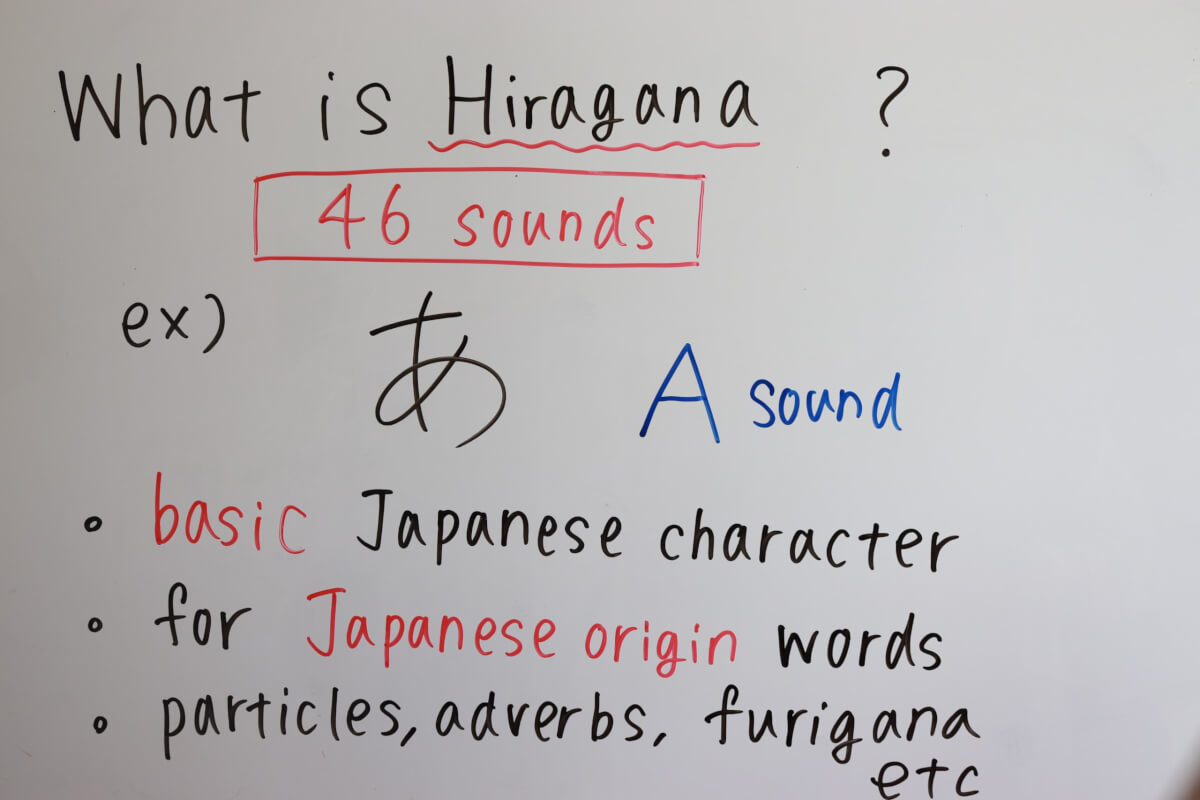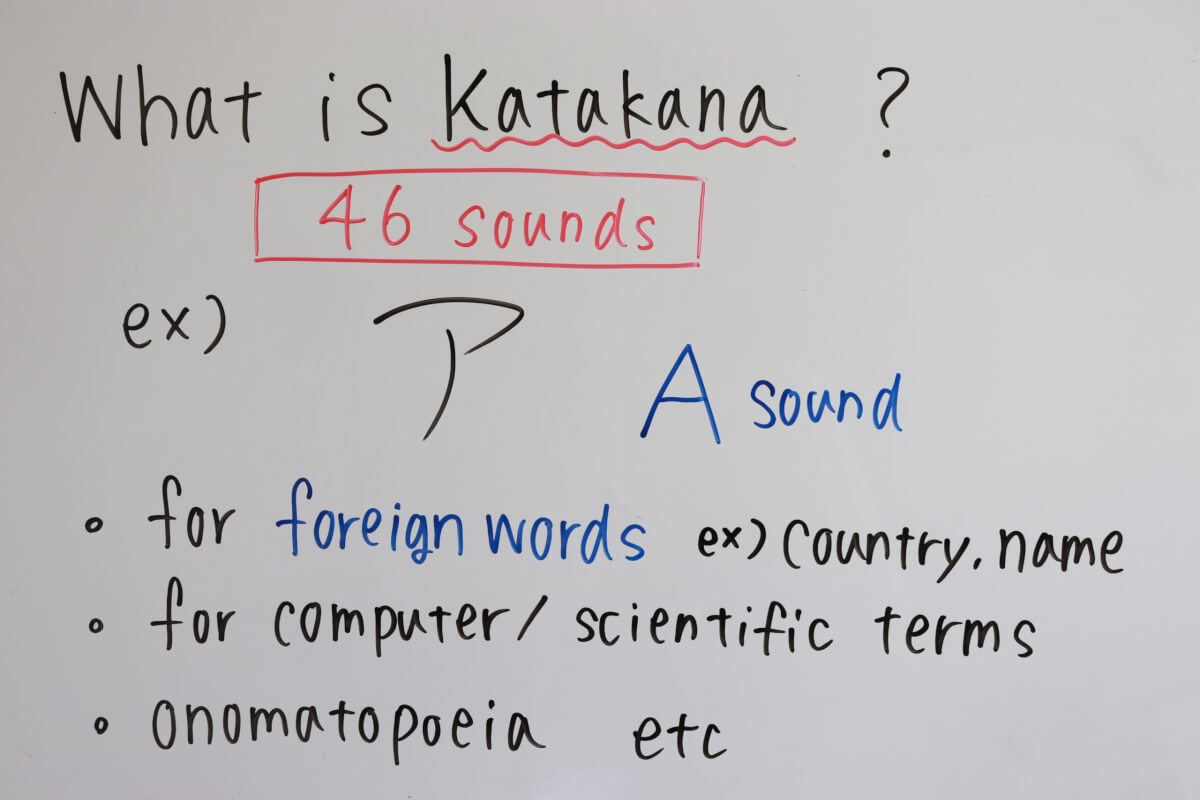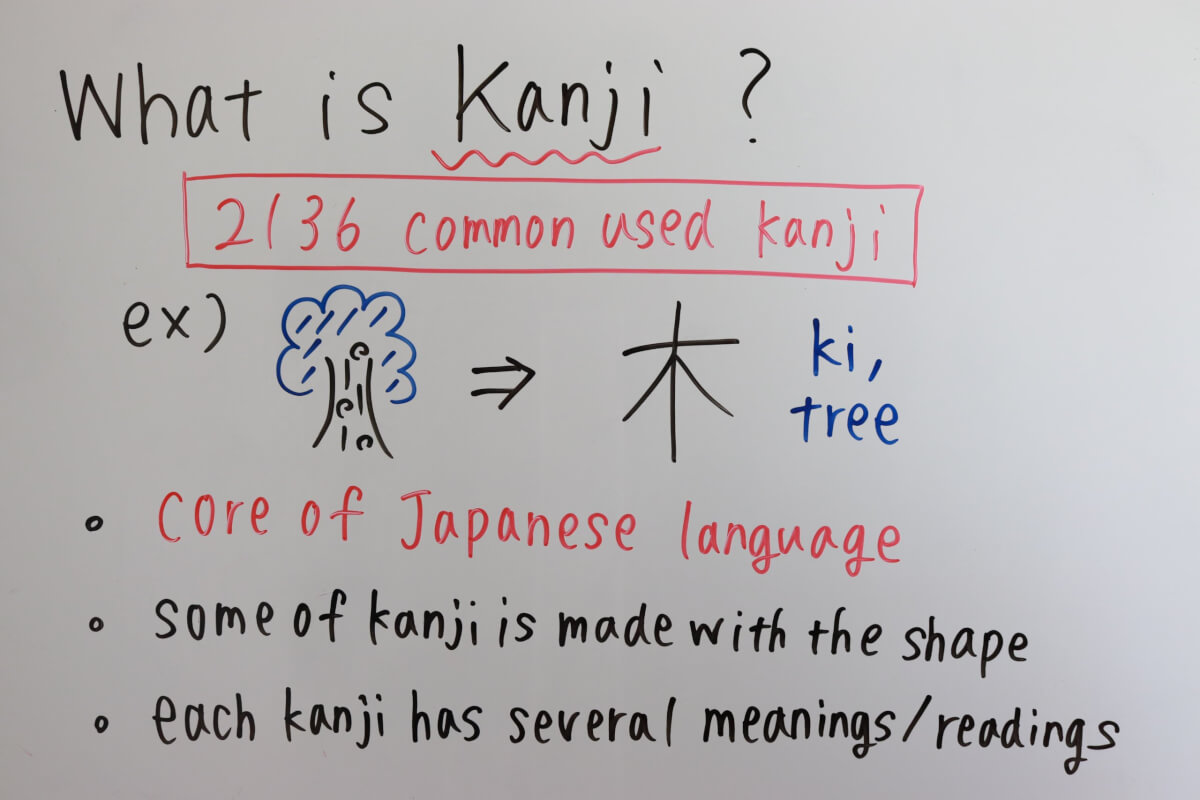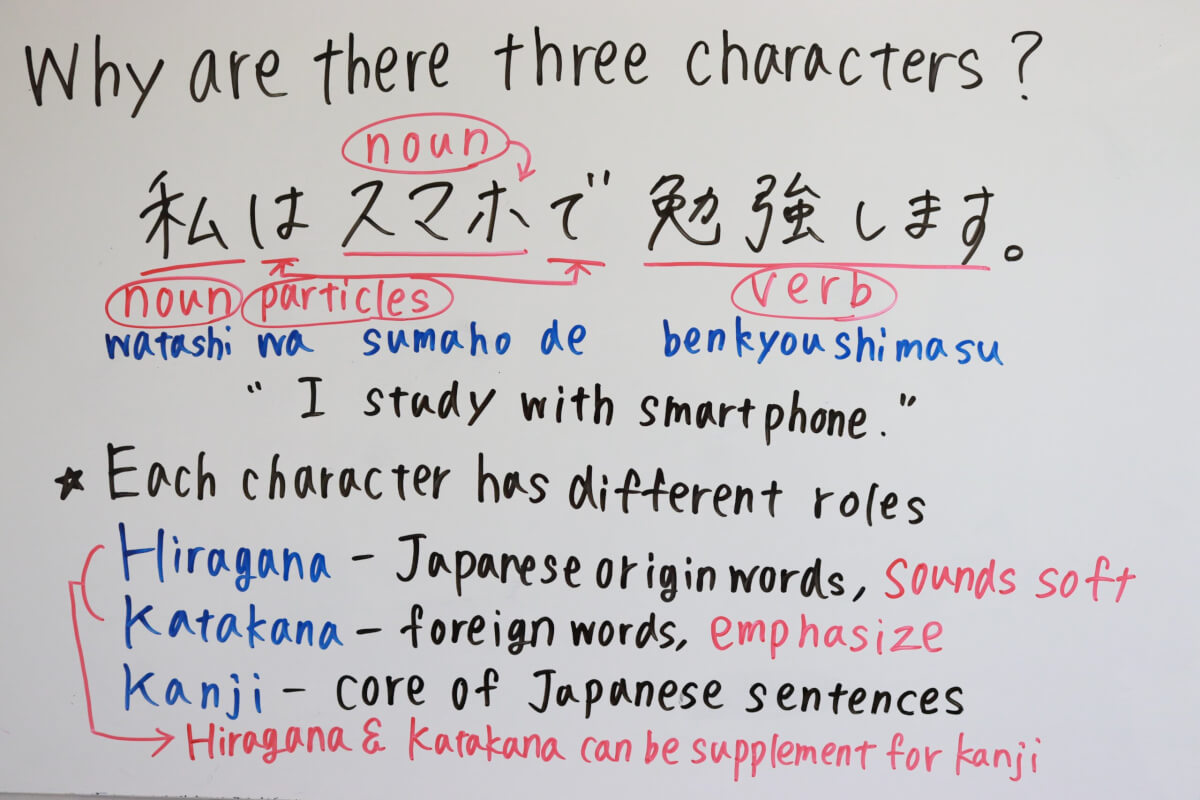- Release Date:
What is the Japanese alphabet?

Have you ever seen Japanese characters? Many people feel as if they are pictographs, with their curved lines and squiggly squares.
The Japanese language actually has three types of characters. Today, I will explain more about these Japanese characters.
What is Hiragana?

Firstly, the most basic Japanese character is hiragana. There are 46 sounds in total. For example, あ shows "A" sound.
All Japanese language teachers tell you to learn hiragana first. This is because Hiragana represents the real basic parts of the Japanese language, such as words of Japanese origin, particles, adverbs, kanji readings(furigana) that we will explain next, and supplementary characters after the kanji.
What is Katakana?

Katakana is very similar to hiragana. Katakana has the same 46 syllables as hiragana. For example, ア shows "A" sound. Katakana is used for words of foreign origin from Japan, names of foreigners, and scientific and computer terms.
For example,
- アメリカ /a me ri ca/ America
- スマートフォン /su ma - to fo n/ smartphone
- コーヒー /ko - hi -/ coffee
- ラーメン /ra - me n/ ramen
These are not originally Japanese foods or drinks, so katakana is used. To study Japanese, study hiragana first, then katakana next.
What is Kanji?

Kanji is an important character that makes up the Japanese language.
Kanji originally came from China, but Chinese has by far the largest number of kanji. There are also many kanji that differ between Chinese and Japanese.
For example, "love" is "愛" /ai/ in Japanese, but it's "爱" in Chinese. So, although there are many similarities between Chinese and Japanese kanji, they are not the same.
There are 2,136 kanji characters which is used commonly. This is by far the largest number compared to hiragana and katakana.
Although the number alone is very large, some of kanji is made with the shape like in the picture 木 /ki/ "tree". And some kanji are made up of combinations of simple kanji. For example, 木 /ki/ "tree" is two for 林 /hayashi/ "woods" and three for 森 /mori/"forest". Their meanings are also similar.
I think it is hard for non-Asians to learn it. Some of my students have kind of an allergy for kanji. However, if you can memorize Kanji, you can read Japanese sentences much faster.
Why are there three characters?

Japanese language consists of these three characters. But why that?
Please see this sentence.
「私はスマホで勉強します。」
/watashi wa sumaho de benkyou shimasu/
"I study with smartphone."
Japanese people write sentences using a combination of kanji, hiragana, and katakana. That sentence also consists of three of them. But without using kanji and katakana, it would be very difficult to read.
「わたしはすまほでべんきょうします。」
It is the same meaning as the previous sentence, however, it's even difficult to distinguish where is noun or verb, or particles.
Japanese writing consists of kanji, which can be said to be the core of Japanese writing. Kanji is so important that hiragana and katakana can be thought of as supplementary to it.
However, hiragana and katakana also play an important role. Japanese people use these three characters to express themselves in various ways.
Many people have become interested in the Japanese language through anime and manga. Weren't many of the sounds expressed in katakana in them? For example, "ガガガガ" which is an onomatopoeic expression of the sound of something big approaching.
Katakana is also used to express onomatopoeic words like this, or to make them stand out.
On the contrary, hiragana can be used to express softer expressions. It can have a gentle atmosphere. For example, "Thank you." is also written in kanji (有難う /arigatou/), but when written in hiragana(ありがとう /arigatou/), it has a gentle atmosphere.
There are three characters in Japanese, and they are very important in Japanese language. Kanji in particular are considered very complicated, but the more you learn the characters, the more you will learn how to express yourself in Japanese.
